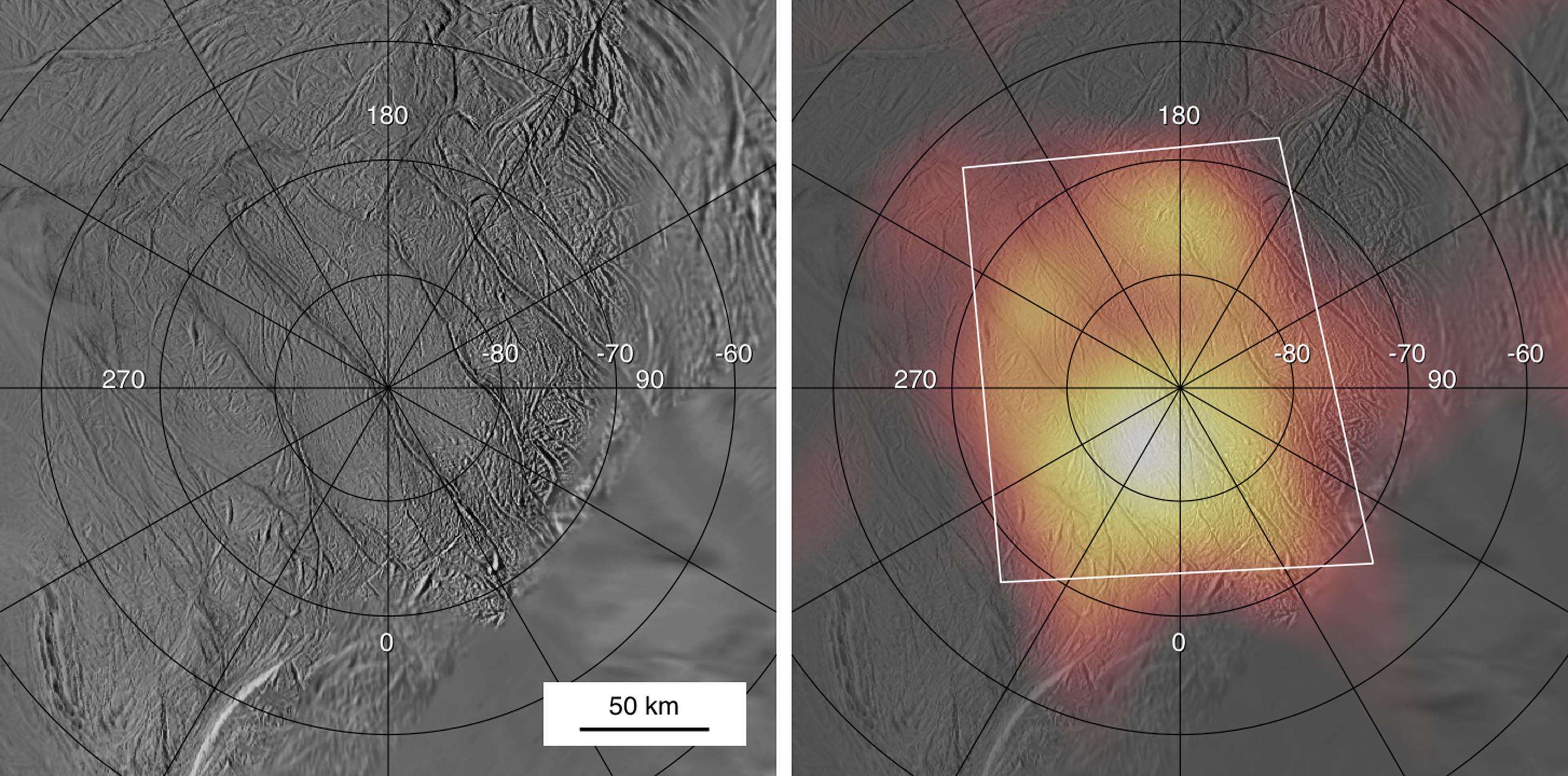Stripes and Heat Map Side-by-Side

| PIA Number | PIA10360 |
|---|---|
| Language |
|
Cassini's March 12, 2008, flyby of Enceladus provided the best view yet of the heat radiation from the active south pole of the satellite. These images summarize what was learned about the south polar landscapes and heat radiation during the previous close flyby on July 15, 2005.
The left panel shows a map of the south pole constructed from images taken by the spacecraft's imaging system. Four prominent fractures, informally called "tiger stripes," cut diagonally across the south polar region. In the right-hand panel, a July 2005 map of the south polar heat radiation, obtained by Cassini's Composite Infrared Spectrometer, is superimposed in false color on the visible images. The observations revealed a prominent warm region centered on the south pole, appearing yellow and orange in this view, which coincides with the locations of the tiger stripes. However, these data were taken from too far away from Enceladus (about 80,000 kilometers or 50,000 miles) to distinguish the fine details of the heat radiation. The July 2005 flyby also included some scattered close-up snapshots by the Composite Infrared Spectrometer; these showed that the heat radiation was concentrated along the tiger stripe fractures, but those snapshots covered only a small fraction of the south polar region.
The white lines enclose the area covered by the much more detailed view of the south pole obtained by the spectrometer during the March 12, 2008, flyby. Numbers on the map show latitude and longitude.
The Cassini-Huygens mission is a cooperative project of NASA, the European Space Agency and the Italian Space Agency. The Jet Propulsion Laboratory, a division of the California Institute of Technology in Pasadena, manages the mission for NASA's Science Mission Directorate, Washington, D.C. The Cassini orbiter was designed, developed and assembled at JPL. The Composite Infrared Spectrometer team is based at NASA's Goddard Space Flight Center, Greenbelt, Md.
For more information about the Cassini-Huygens mission, visit http://saturn.jpl.nasa.gov .
Credit: NASA/JPL/GSFC/SwRI/SSI
